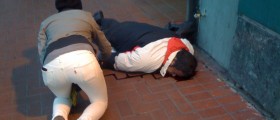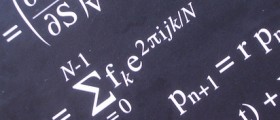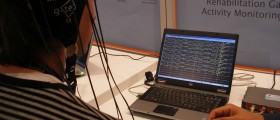An EEG is a recording of the electrical activity of the brain. This process cannot create any side effects as your brain is making this electrical activity all the time regardless. The technician may ask you to perform hyperventilation during the test which can make you feel a bit light headed during the process as you are sending extra oxygen to your brain at this time from the deep breathing. You may also feel some numbness of tingling in your hands of feet for the same reason but this is also a normal response to the hyperventilation. It is done in EEG to help bring out baseline abnormalities in potential epilepsy sufferers. It may trigger brief episodes in petite mal sufferers that they will probably not even be aware of. Photic stimulation (strobe light) is also often used to check for a photoparyxismal or photoconvulsive response but these are quite rare even in a group of epilepsy sufferers. The light may disturb the visual cortex somewhat but this is also expected in a normal healthy brain. The combination of hyperventilation followed by photic stimulation will often cause drowsiness also, but this is also a normal response to these provocations.
I am reading a lot of confounding information on this forum about EEG causing bad effects. Please consider anxiety/stress levels, amount of sleep, other health issues, how soon after a loss of consciousness event and other factors such as recent medication changes prior to testing as the EEG is probably not the cause.
Loading...
You've provided a thorough and largely accurate description of an EEG (electroencephalogram) and its potential effects during testing. An EEG is a non-invasive test used to record the electrical activity of the brain. Electrodes are placed on the scalp to detect the brain's electrical signals. The test itself does not produce electrical currents but rather records the natural electrical activity of the brain.
-
Hyperventilation: This is sometimes used during an EEG to increase brain activity. It can indeed cause light-headedness, tingling, or numbness due to changes in blood chemistry when you breathe deeply and rapidly. These sensations are generally temporary and resolve shortly after normal breathing is resumed.
-
Photic Stimulation: This involves flashing lights at various speeds to stimulate the brain's activity. It's true that this can disturb the visual cortex and may induce drowsiness. In rare cases, it can trigger seizures in people with photosensitive epilepsy, but this is an intentional part of the test to diagnose such conditions.
Generally, EEG is a safe procedure with minimal risks. Most people do not experience significant side effects from an EEG. The sensations experienced during hyperventilation or photic stimulation are typically brief and resolve on their own.
It's important to consider that anxiety, stress, lack of sleep, and other health conditions, as well as recent medication changes, can influence a person's experience during an EEG. These factors can also impact the interpretation of EEG results.
Sometimes, the physical and emotional state of a person undergoing an EEG, especially if they have a neurological condition like epilepsy, can lead to misattribution of symptoms to the EEG itself rather than their underlying condition or the aforementioned factors.
In conclusion, while the EEG is a very safe procedure with minimal risks, the sensations experienced during the test like light-headedness or drowsiness are typically normal responses to the provocations used during the test (like hyperventilation and photic stimulation).
Loading...
















